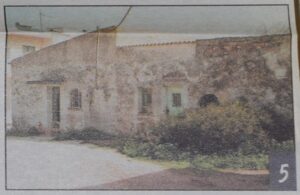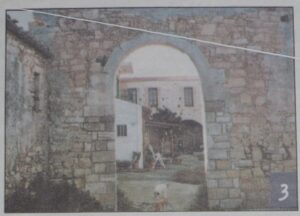The metochi estates: other estates
City
Migration Period
City Narratives
Date
Full Description
There were many housing and agricultural complexes on the perimeter of the city which became exchangeable land to be used for the settlement of Asia Minor refugees. In many cases, the fact that they were granted to refugees is the only information we have about them. These estates were:
Metochi Haider Agha on the border of the area of Mournies, south of Chania. Today, the national highway cuts across its farmlands.
Metochi Memisis, in Xylokamara, which was divided among three refugee families.
Metochi Agadakis in Mournies, which probably had more than one Muslim owners and for this reason was known as ‘Symisiako’ [split in two].
Metochi Stylos, next to the Kokkino Metochi. The biggest part of its building complex has been remodelled and a large portion of its farmlands has been turned into land plots for development.
Metochi Makraliana, a significant expanse of land, has also been fragmented into plots.
Metochi Charakia, west of Pasakaki. Some of its buildings still stand but have been significantly remodelled to become modern residences. The estate had been divided among several refugee families.
Metochi Dolma Bey, in Aberia, a neighbourhood in the eastern part of Chania. It wasn’t a very large estate, but it was the rehabilitation site for a large number of Asia Minor refugee families. The main building of the metochi was bought by a refugee family in 1935. Today only part of the wall surrounding the estate still stands.
In Vamvakopoulos, a village near the city where a large number of Asia Minor refugees were rehabilitated, there were the following metochi estates: Kara Ali, Marina, Yetim Agha, Sfakian Ali and Erifiana. In this area, similarly to almost all the estates which became exchangeable lands, there was no significant agricultural development. Today, the area is mostly urban due to its proximity to the city and agricultural activity is scattered and incidental. The agricultural rehabilitation of Asia Minor refugees on these estates did not stand the test of time and most refugees did not engage in agricultural activities for long.
The recent photographs presented here depict material traces of the metochi estates. From Metochi Haider Agha we can see the stairway that used to lead to the manor. The photograph from Metochi Memisis shows its modern residential nature. From Metochi Agadakis we can see some auxiliary buildings which still remain. From Metochi Stylos we can discern part of the perimeter wall.
The photograph from Metochi Charakia shows how small traces of the old buildings are integrated into the new, like the arched door we can see on the left side of the building. All that is left of Metochi Dolma Bey is a model, constructed by the son of the Asia Minor refugee who bought the metochi manor in 1935. Finally, the two photographs from Metochi Kara Ali depict the central gate. In the first photograph, taken in the 1990s, we can see that the gate had been widened to allow for cars. In the next photograph, taken later, the gate has been restored, indicating the change in attitude towards the city’s Ottoman past.
Bibliography
Manolis Manousakas, ‘Photo-retrospectives in the plains of Chania. 175. Metochi Hayder Aga, Metochi Vrontou’, Routes supplement, Chaniotika Nea (18/07/2008).
Manolis Manousakas, ‘Photo-retrospectives in the plains of Chania. 178. Metochi of the Xylokamara area’, Routes supplement, Chaniotika Nea (08/08/2008).
Manolis Manousakas, ‘Photo-retrospectives in the plains of Chania. 206. Metochi of the Mournies area’, Routes supplement, Chaniotika Nea (07/03/2009).
Manolis Manousakas, ‘Photo-retrospectives in the plains of Chania. 209. Charakias, Metochi Lymperaki, Routes supplement, Chaniotika Nea (28/03/2009).
Manolis Manousakas, ‘Photo-retrospectives in the plains of Chania. 236. Vamvakopoulos, Metochi Kara Ali, Routes supplement, Chaniotika Nea (03/10/2009).
Giorgos Konstas, ‘Imaginative lockdown creations made with passion in Chania’, Chaniotika Nea(04/01/2021).








